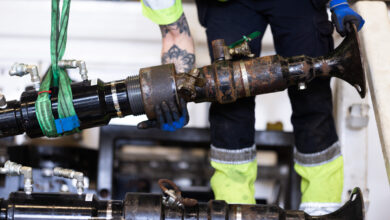Accelerating drilling innovation economically, sustainably calls for operator buy-in
By Joanne Liou, editorial coordinator
Any innovative technology offered by a service company or drilling contractor has the potential to be the next game-changer for the industry; however, without the support or input of the operator – the end user – it also has the potential to become a product without a buyer. Hege Kverneland, corporate VP & chief technology officer, National Oilwell Varco, emphasized the importance of asking operators the simple question – what do they need? – during technology development.

Ms Kverneland was among four other panelists – Gregers Kudsk, VP technical management, Maersk Drilling; Mike Power, drilling & completions manager, Chevron; Joop Roodenburg, CEO, Huisman Equipment BV; and Tom Bates, senior advisor, Lime Rock Partners and – who addressed the challenges of accelerating economical and sustainable innovation at a workshop held by the IADC Advanced Rig Technology Committee in Barcelona, Spain, on 12 June 2012. The session was moderated by John de Wardt, president of De Wardt & Co.
“The drivers to optimize the drilling process are to drill faster, safer and more efficiently,” Ms Kverneland said. “If we only improve safety – getting people off the rig – we will not be able to sell it because it’s nothing on the bottom line.” This lesson was learned through an experience with an anti-collision system for the drill floor, she noted. Although the product promised to enhance safety, it did not add value to faster drilling nor to cost reduction. As a result, end users could not justify its adoption.
Maersk is in the process of streamlining the relationship among different stakeholders to sustain innovation, Mr Kudsk said. It is necessary to think about what drilling contractors can deliver to their customers and identify what it takes to service all parties involved in implementing new and innovative drilling technologies. “We need to be cognizant to their development,” he said. “This is not common yet because we don’t have a contractual agreement, but we’re on the way to implement that in contract terms.” For example, Maersk Drilling considers NPT for the entire rig operation as part of their contracts to demonstrate how they can deliver as the lowest possible NPT for the operator.
Upper-level management also plays an inherent role to move innovations forward. “Champions at a lower level are great, but when we take it up a notch to VP level, then they can give you the insights in terms of financial and strategic sense of what we need to do to move technology forward,” Mr Power said. At some companies, expectations of management and their performance have changed in recent years, encouraging asset managers to take second looks at trying new technologies, such as piloting technologies meant for the deepwater GOM on land operations first.
From the perspective of a rig and equipment manufacturer that has large percentages of its business in other industries such as pipe-laying and even the manufacture of theme park roller coasters, Mr Roodenburg cautioned against skimping on commissioning and testing and taking new ideas to the field too hastily. Disney, for example, integrates commissioning and testing into the development and manufacture of their amusement park rides, and the returns are high: Disney maintains a 99.8% uptime for a typical ride, he said. “Industry does not allow us to give time to do that. Compared to Disney, they take the time and … they see that performance is outstanding.”
Mr Bates, whose company invests in small technology firms, agreed that field-testing is often a significant barrier to proving innovative technologies. “The hardest thing is to get a product in the well and get it tested, get it on the rig and get it tested,” he said. The nature of the industry itself places the cost of individual failure very high. “If you mess up a chip in a cell phone, that is a $200 mistake. If you make a mistake in a deepwater well in the Gulf of Mexico, that might be a $150 million and a whole bunch of lives at risk,” he explained.





How many service companies today are willing to share financial risk with operators on pilot projects that involve new and untested equipment? Upper management on both sides of the aisle need to re-establish this old and tried method of innovation, i.e, take the risk on faiure and success in field trials. I have not seen much of this risk taking in the last 15 years or so.